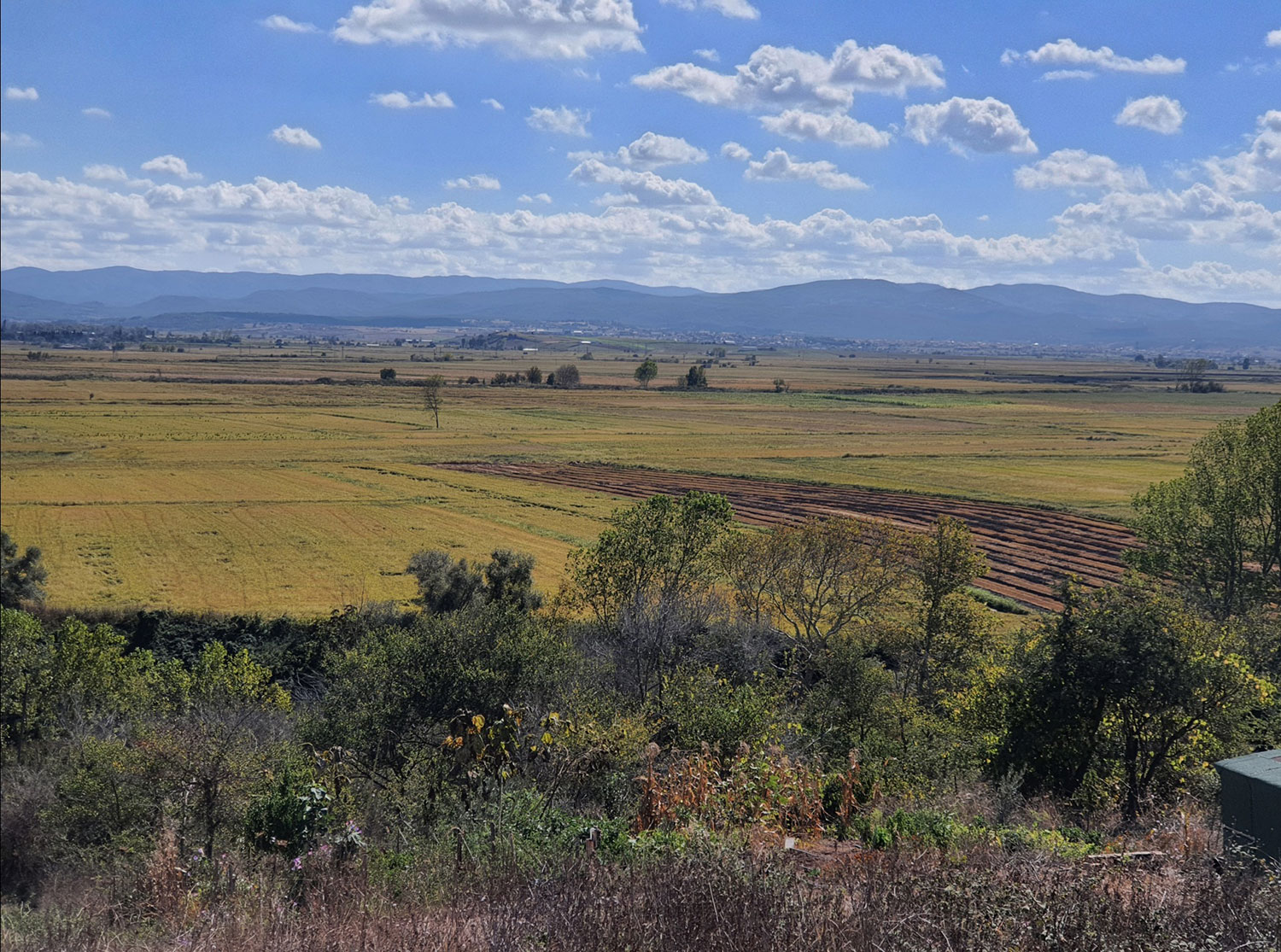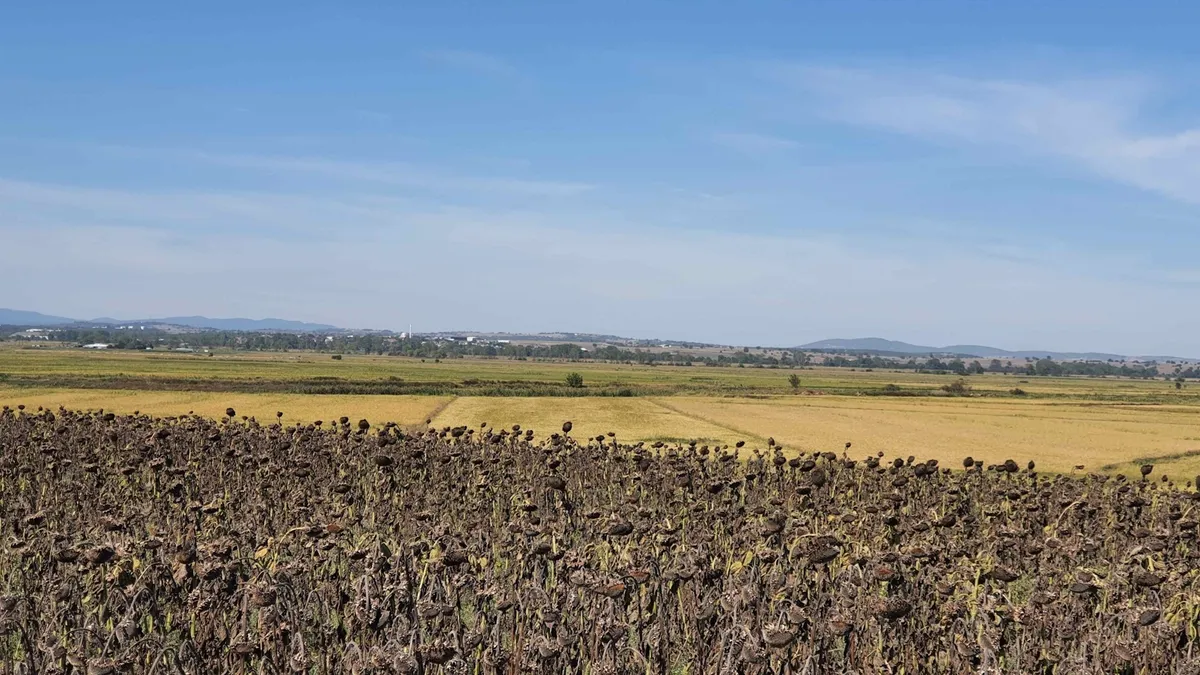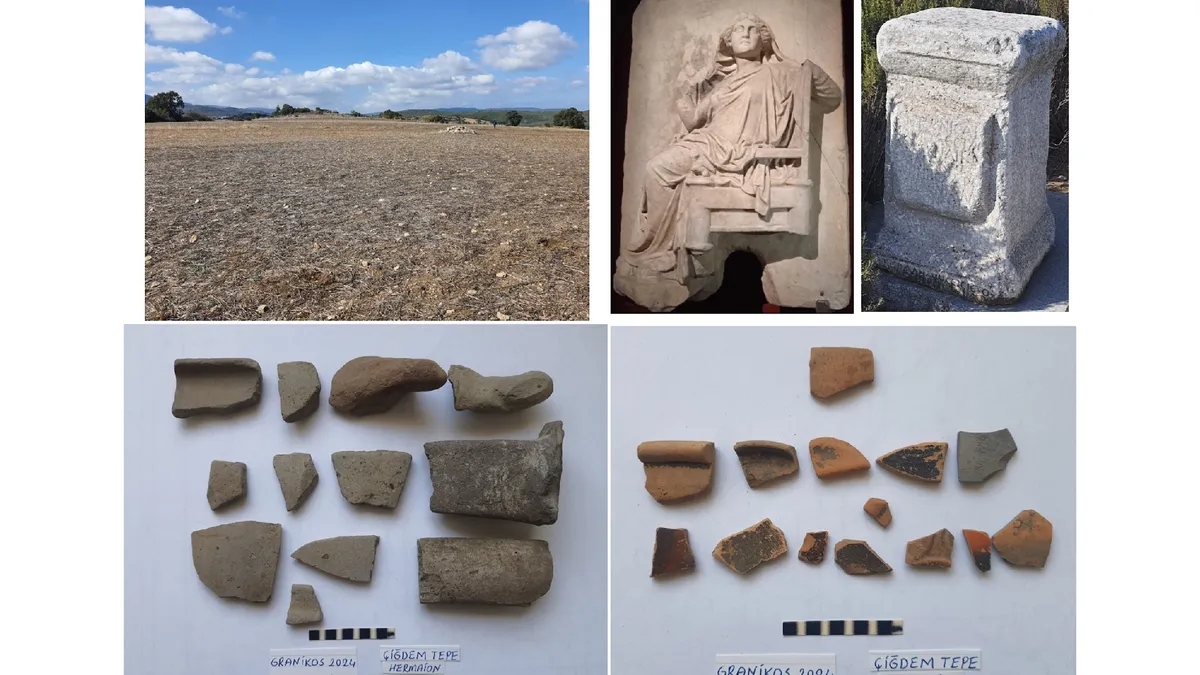Granicus battlefield as seen by AlexanderThe new evidence includes traces of the ancient city of Hermaion, recorded as Alexander’s last encampment site before the battle.

Moderator: pothos moderators
Granicus battlefield as seen by AlexanderThe new evidence includes traces of the ancient city of Hermaion, recorded as Alexander’s last encampment site before the battle.

Yes, I know - tempt you to buy the magazine maybe. Anyway, this article https://www.livescience.com/archaeology ... -in-turkey says the battlefield is located on the Biga river, which appears to have been long associated with the Granicus. The article also saysmarcus wrote: ↑Thu Jan 09, 2025 7:14 pm I get very frustrated when these articles include no actual information to flesh out the story. The 'Hermaion' discovery sounds interesting (Arrian 1.12.6) if it turns out that it is indeed that city; but they still don't tell us where the blinkin' site is!
Still, pretty cool if and when they decide to give us some actual geographical information!
The (battle)site is about 6 miles (10 kilometers) north of the city of Biga in northwest Turkey.
not sure about the photo, though. I think that's possibly taken standing ON the hill, looking NW, towards what Arrian calls the "Idaean Mountains".
Oh, that's really interesting, thank you. You may be right that the hill from which the photo was taken is the one where the grave was found as it is much nearer the river than the background hill.chris_taylor wrote: ↑Wed Jan 15, 2025 9:52 pmnot sure about the photo, though. I think that's possibly taken standing ON the hill, looking NW, towards what Arrian calls the "Idaean Mountains".
for those who haven't been to the battlefield, Google lets you drive past the foot of the Mercenary Hills virtually. They're only about 30m high, but the landscape is so flat, they really stand out. I tried to capture that weird discrepancy in a photo and failed. Google to the rescue: follow the road in the direction the motorcyclist with the red hat, they're just coming up on your right ...
https://www.google.co.uk/maps/@40.30209 ... FQAw%3D%3D


Looking at the battle line-ups for the Granicus, these mercenaries are not mentioned specifically. They therefore have to have been incorporated into the six battalions of the phalanx, commanded by Perdiccas, Coenus, Amyntas s. of Andromenes, Philip s. of Amyntas, Meleager, Craterus at the Granicus. To the right of them stood the hypaspists under Parmenion's son Nicanor. These are likely to have been mostly Macedonian.There were found to be, of infantry, twelve thousand Macedonians, seven thousand allies, and five thousand mercenaries, all of whom were under the command of Parmenion. Odrysians, Triballians, and Illyrians accompanied him to the number of seven thousand; and of archers and the so‑called Agrianians one thousand, making up a total of thirty-two thousand foot soldiers.
Arrian (Book I, 14) saysWhen Alexander learned of the concentration of the Persian forces, he advanced rapidly and encamped opposite the enemy, so that the Granicus flowed between the encampments. The Persians, resting on high ground, made no move, intending to fall upon the foes as he crossed the river,
They (the Persians) had extended their horse along the bank of the river in a long phalanx, and had posted the infantry behind the cavalry, for the ground above the bank was steep and commanding.
Once the Greek mercenaries were defeated, Arrian (Book I, 16) saysthe Macedonian phalanx crossed the river and the infantry forces on both sides engaged. 13 The enemy, however, did not resist vigorously, nor for a long time, but fled in a rout, all except the Greek mercenaries. These made a stand at a certain eminence, and asked that Alexander should promise them quarter.
The grave that has been found therefore (even if it is of the right period), is either Macedonian or from the Greek allies/mercenaries. There appears to have been a confusion in these reports with the Greek mercenaries fighting for the Persians with Alexander's side. None of the Greek mercenaries on the Persian side are likely to have been buried with honour or their weapons as the survivors were sold into slavery by Alexander.Of the other cavalry over sixty were slain, and of the infantry, about thirty. These were buried by Alexander the next day, together with their arms and other decorations.
Although there is certainly a theory - based on Arrian's description of the Macedonian battle lines (I think - I don't have the references to hand) - that Alexander didn't actually deploy any of the allied Greek troops, nor his mercenaries. The only troops at the Granicus were the Macedonians and Thessalians. If I can find the references for this I will post; but not close enough to my resources at the moment.Alexias wrote: ↑Thu Jan 16, 2025 2:02 pm I had a suspicion whilst writing last night that the Greek mercenaries were fighting on the Persian side, not on Alexander's side. I therefore did a bit of investigating.
Diodorus says (Book XVII, 17) that of the troops Alexander took into Asia there were 5,000 mercenary infantry.
you might be right. simplest thing would be to email the guy and ask. I'd do it, but I'm just an amateur.
It's an alluvian plane, so there is no guarantee that the river and its final branches are still in the same place. we know it changed course multiple times, as did its tributaries. at some time, there were also marshes and a lake. for all we know, today's "Granicus" wasn't even Alexander's Granicus: over two millenia, multiple name changes in different languages, the river and one of its tributaries may have swapped identities. certainly looking at the last confluence of today, it's a coin toss to say which one is the river and which one a tributary.Alexias wrote: ↑Thu Jan 16, 2025 11:20 pm All of the Persian infantry, including the Greek mercenaries, were stationed behind the Persian cavalry, and once Alexander broke through the cavalry, the Persian infantry fled, apart from the Greeks. Two kilometres (a mile and a quarter) away from the river is far too far away for the infantry to have been stationed.
Arrian, Book 1, XVI. Chinnock translation" "He also buried the Persian commanders and the Greek mercenaries who were killed fighting on the side of the enemy."
not sure I understand that: the Persians were there first, so they picked their place on the east bank of the river, wherever they thought was strategically best all around. but wherever that was, there's heaps of space on the west bank for Alexander to moveAlexias wrote: ↑Thu Jan 16, 2025 11:20 pm J F C Fuller's map of the battle shows a lake Edje Gol, and some higher ground to the south west of Alexander's position. I haven't been able to find this lake on Google maps, so maybe it has been drained. However, this screenshot shows where the higher ground on Fuller's map is, where it says Cinarkopru, and the river runs right at the base of this higher ground. I've marked with an X approximately where your photo was taken, but looking directly across the valley cannot be where Alexander was positioned as there simply isn't room to deploy his troops.